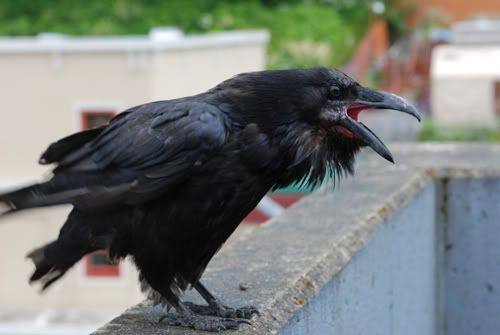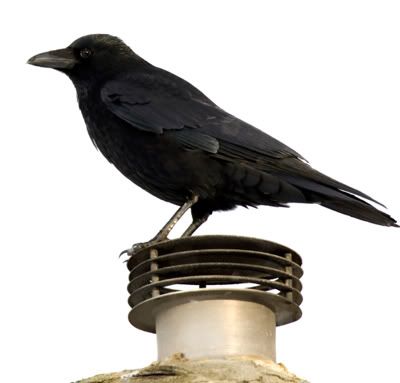
As recently reported in The Huffington Post Green, crows have been attacking Seattle-area police in the parking lot of an Everett Police Department precinct station.
The aggressive black birds have been swooping down and dive-bombing officers on their way to and from their cars. One officer who was attacked by a crow, noted that the birds were behaving like velociraptors. In an effort to scatter the crows, officers turned on their sirens to frighten them. Not only did this strategy of bird control fail, the crows “decorated” police cars with droppings.A wildlife department biologist noted that the crows are merely protecting baby crows that were ejected out of their nests and learning to fly. It’s a known fact among bird experts that crows are highly intelligent, so much so that the birds can actually recognize the individual features of people. Crows have also been known to hold grudges. So it stands to reason that if these crows perceive police officers as threatening to their young, they will attack them—or anyone else wearing a similar uniform.Clearly, what the Everett Police Department precinct station needs to do is implement an effective bird control strategy. Fortunately, there are a number of effective and humane bird control deterrents currently on the market. Here’s what the pros recommend:Stainless Steel Bird SpikesLarge birds like crows simply can’t get their wings around Stainless Steel Bird Spikes. The spiked strips are easy to install and can be glued down, nailed or screwed onto most any surface. They come in a variety of widths --1”, 3”, 5” and 8” --to match the area you want protect. The best stainless steel bird spikes are made in the USA and will have their spikes securely embedded in UV-resistant unbreakable polycarbonate. Approved by the US Humane Society and PICAS, the spikes are blunted at the tips and won't injure crows or installation crews.Bird Chase Super SonicEasy to place on precint buildings, garages, and similar open areas, the Bird Chase Super Sonic exploits a crow’s alertness to sound threats. The device continually broadcasts pre-recorded bird distress and predator calls. These sounds resemble natural bird sounds, so humans won't be bothered by them. Because of the socail nature of crows, they will hear the distress and predator calls and send the message along that there is a threat, and the birds will flee the area. The quality-constructed device is weather resistant and designed for outdoor use. It's easily programmed for day or night operation. Bird Jolt Flat TrackA low-profile, electrical bird deterrent track system, Bird Jolt Flat Track imparts a mile electric shock to the feet of crows (or any bird for that matter). Birds are quickly “instructed” to avoid the surface and will move on. The shock produced is harmless to crows, yet it creates an inhospitable area to the birds. Flat Track is made in the USA and comes in six colors to match the surface onto which it is installed. The track can be easily glued down to most surfaces.







